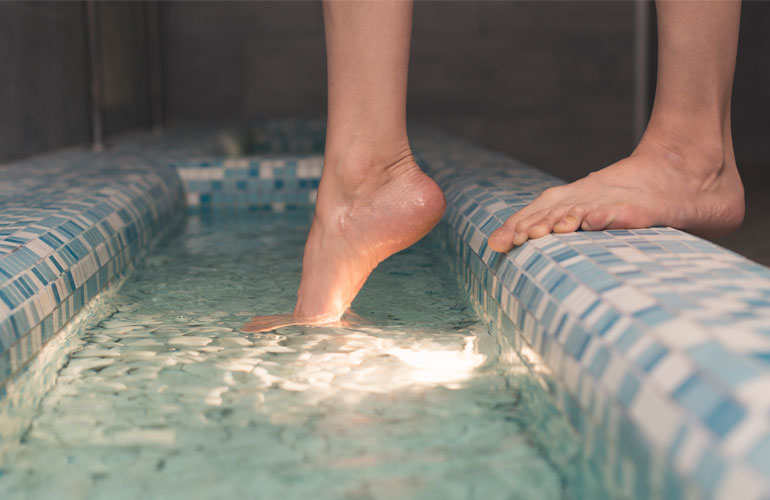Start - Aktualności - Do not miss the paddling pool before entering the pool! For your health and well-being

Do not miss the paddling pool before entering the pool! For your health and well-being
If you happened to miss the foot-washing paddling pool when entering the pool, don't do it next time. After all, paddling pools are an essential part of protecting the pool water from at least some of the contaminants we transport on our bodies.
This is confirmed by studies monitoring the presence of micro-organisms on flat surfaces in swimming pool facilities. They show clear differences before and after the paddling pool.
‘The total number of micro-organisms, including staphylococcus bacteria and fungi, was higher on the surfaces on the changing room side (before the paddling pool) than on the pool hall area (after the paddling pool). This shows that the foot-washing paddling pools are fulfilling their function, i.e. retaining some of the physicochemical and microbiological pollutants, improving the water quality in the pool basin itself’ said Edyta Łaskawiec, PhD, from the Department of Environmental Biotechnology at the Faculty of Energy and Environmental Engineering, Silesian University of Technology.
She recalled that, according to the legal requirements for swimming pool water, the concentration of free chlorine in the foot-washing pools should be more than twice as high as in the swimming pool basins (1-2 mg chlorine/L).
‘This is because foot wash paddling pools are often the main barrier against contaminants that we bring on our feet (and flip-flops) into the pool hall area or into the immediate vicinity of the pool, from where they can easily migrate into the water. Footwashing paddling pools are therefore an important element in protecting the pool water from at least some of the contaminants we transport on our bodies’ stressed Edyta Łaskawiec.
She added that going through the foot-washing paddling pool should complement the warm shower (with soap) we take just before entering the pool.
‘As the researcher said, the predominant fungal species in Polish facilities are Candida albicans, Candida glabrata, and Trichophyton mentagrophytes, which was the most common dermatophyte isolated from floors and paddling pools. - Interestingly, the authors of the study did not isolate Trichophyton rubrum in swimming pool facilities, which is the most common cause of fungal infections in our country, showing that swimming pools are not the dominant source of infections’ she stressed.
In addition, researchers suggest that softened human skin may be more susceptible to fungal infections. ‘Walking barefoot, inaccurately washing and drying feet significantly increases the risk. It is worth bearing this in mind’ concluded Łaskawiec.
The full text will appear in the next issue of the Silesian University of Technology Bulletin.








